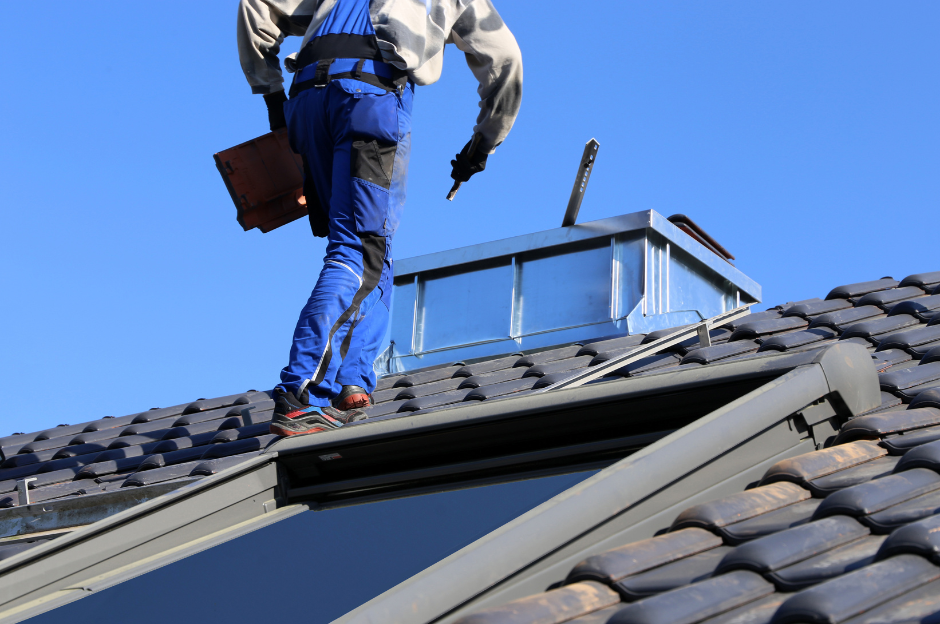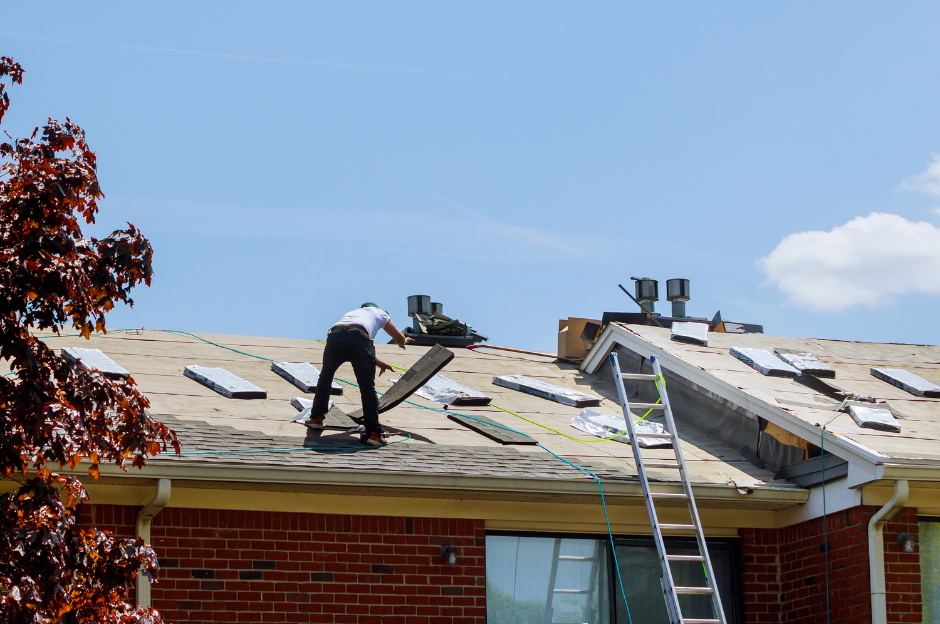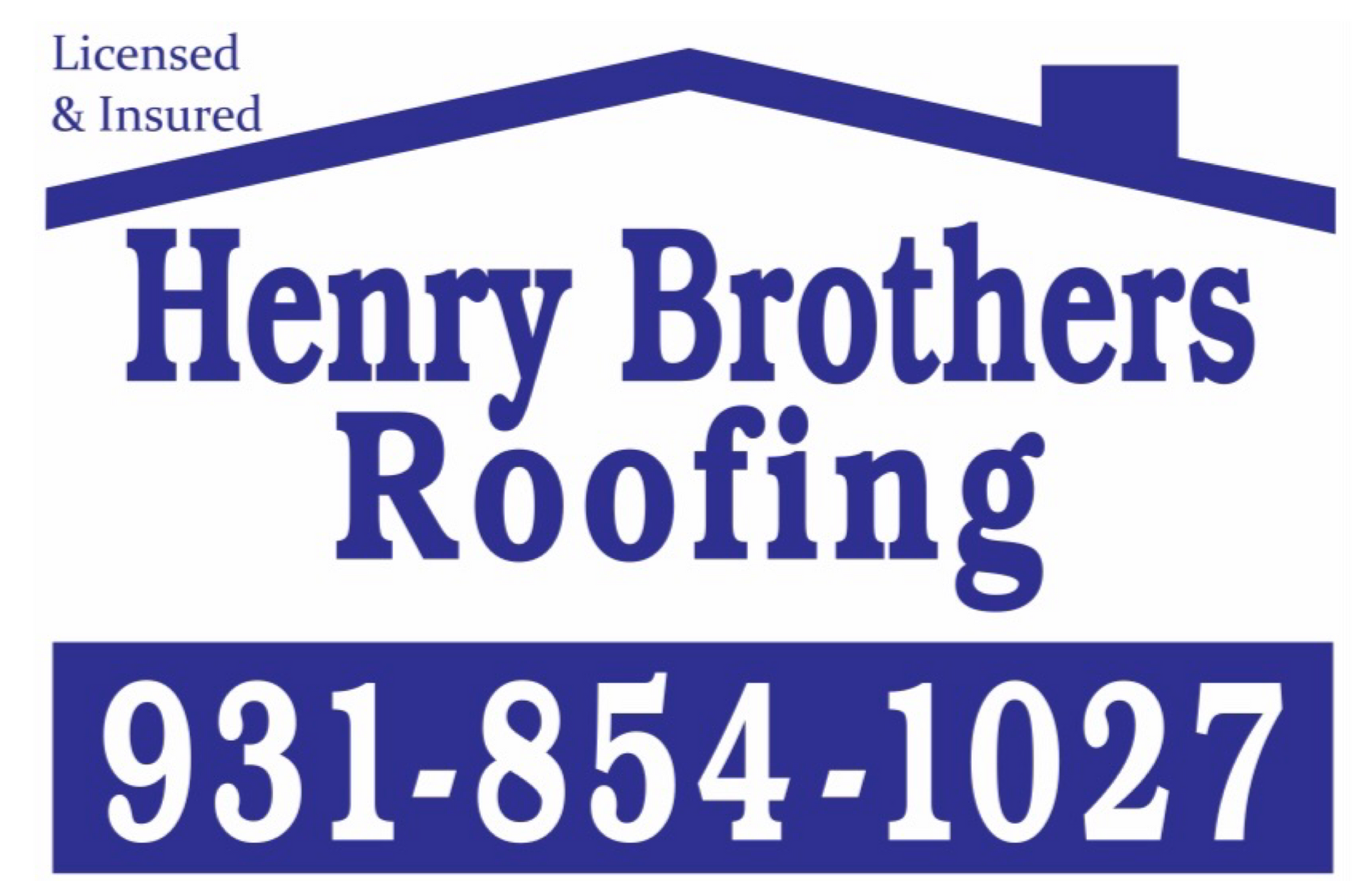Commercial Roofing Solutions: Tailoring Solutions to Meet the Unique Needs of Businesses
March 1, 2024

When it comes to the structural integrity of a business establishment, the importance of a reliable roofing system cannot be overstated. Commercial buildings have distinct roofing needs compared to residential properties due to factors such as size, complexity, and usage. From warehouses and office buildings to retail centers and industrial facilities, businesses require roofing solutions that offer durability, longevity, and protection against the elements. In this blog post, we'll delve into the unique needs of commercial roofing and explore the tailored solutions available to businesses to ensure the safety, efficiency, and longevity of their structures.
Understanding the Unique Needs of Commercial Roofing:
Commercial roofing differs from residential roofing in several key aspects, necessitating specialized solutions to meet the unique needs of businesses. Here's a closer look at the distinctive characteristics of commercial roofing:
Size and Complexity:
Commercial buildings typically have larger roof areas and more complex configurations than residential properties. They may feature multiple levels, rooftop equipment, HVAC systems, and drainage systems, requiring specialized expertise and equipment for installation, maintenance, and repairs.
Usage and Occupancy:
Commercial buildings serve diverse purposes, from retail and hospitality to manufacturing and warehousing. The roofing requirements for each type of business vary based on factors such as foot traffic, occupancy levels, equipment loads, and environmental exposure.
Regulatory Compliance:
Commercial roofing must comply with local building codes, zoning regulations, and industry standards to ensure structural integrity, safety, and environmental sustainability. Businesses may need to obtain permits, inspections, and certifications for roofing projects to meet regulatory requirements and avoid penalties.
Long-Term Performance:
Commercial roofing is designed to withstand the rigors of commercial use and provide long-term performance in demanding environments. Businesses rely on their roofing systems to protect assets, maintain operations, and safeguard employees, customers, and inventory from weather-related damage and environmental hazards.
Meeting the Unique Needs of Businesses:
Commercial roofing contractors offer a range of specialized solutions tailored to the unique needs of businesses across various industries. These solutions address key considerations such as durability, energy efficiency, cost-effectiveness, and compliance with regulatory requirements. Here are some common commercial roofing solutions:
Single-Ply Membrane Roofing:
Single-ply membrane roofing systems, such as TPO (thermoplastic polyolefin) and EPDM (ethylene propylene diene terpolymer), are popular choices for commercial buildings due to their durability, flexibility, and ease of installation.
TPO roofing offers excellent resistance to UV radiation, ozone exposure, and chemical pollutants, making it ideal for flat or low-slope roofs in industrial and commercial settings.
EPDM roofing is known for its superior weather resistance, thermal stability, and low maintenance requirements, making it suitable for high-traffic areas, retail centers, and office complexes.
Built-Up Roofing (BUR):
Built-up roofing systems consist of multiple layers of asphalt-impregnated felt or fabric bonded together with hot asphalt or cold-applied adhesives.
BUR systems provide robust waterproofing, insulation, and fire resistance properties, making them suitable for flat or low-slope roofs in commercial and industrial applications.
These time-tested roofing systems offer durability, longevity, and ease of maintenance, making them a cost-effective option for businesses seeking reliable protection against weather-related damage and environmental hazards.
Metal Roofing:
Metal roofing is a versatile and durable option for commercial buildings, offering exceptional strength, longevity, and energy efficiency.
Metal roofing systems are available in a variety of materials, including steel, aluminum, copper, and zinc, each offering unique benefits in terms of durability, corrosion resistance, and aesthetics.
Metal roofs are lightweight, recyclable, and highly resistant to fire, wind, hail, and extreme weather conditions, making them ideal for commercial applications such as warehouses, manufacturing facilities, and agricultural buildings.
Green Roofing Solutions:
Green roofing, or vegetative roof systems, incorporate living plants, grasses, and vegetation into the roofing assembly, providing numerous environmental, economic, and aesthetic benefits.
Green roofs help mitigate stormwater runoff, reduce urban heat island effect, improve air quality, and enhance energy efficiency by providing natural insulation and shade.
These eco-friendly roofing solutions create inviting outdoor spaces, promote biodiversity, and contribute to sustainability initiatives, making them increasingly popular choices for commercial buildings seeking to minimize their environmental footprint.
Solar Roofing:
Solar roofing integrates photovoltaic (PV) panels or solar shingles into the roofing system, allowing businesses to harness renewable energy and reduce reliance on traditional power sources.
Solar roofs generate clean, renewable electricity, reducing utility costs, carbon emissions, and dependence on fossil fuels.
Businesses can take advantage of incentives, tax credits, and financing options to offset the upfront costs of solar roofing installations and achieve long-term savings on energy expenses.
Roof Coatings and Sealants:
Roof coatings and sealants provide an additional layer of protection against water infiltration, leaks, and weather-related damage.
Reflective roof coatings help reduce rooftop temperatures, minimize heat transfer to the building interior, and lower energy costs by enhancing solar reflectance and emissivity.
Waterproofing sealants and membranes prevent moisture intrusion, extend the lifespan of the roof, and preserve indoor air quality, making them essential components of commercial roofing maintenance and repair programs.
Choosing the Right Commercial Roofing Contractor:
Selecting the right commercial roofing contractor is critical for ensuring the success, longevity, and reliability of your roofing project. Here are some factors to consider when choosing a commercial roofing contractor:
Experience and Expertise:
Choose a roofing contractor with extensive experience and expertise in commercial roofing solutions, including installation, maintenance, and repair.
Look for contractors with a proven track record of delivering high-quality workmanship, meeting project deadlines, and exceeding client expectations.
Licensing and Certification:
Verify that the roofing contractor holds the necessary licenses, permits, and certifications to perform work in your area and comply with industry standards and regulations.
Choose contractors who are certified by leading manufacturers and industry organizations, indicating their commitment to quality, professionalism, and customer satisfaction.
References and Reputation:
Request references and testimonials from previous clients to gauge the contractor's reputation, reliability, and customer satisfaction.
Research online reviews, ratings, and testimonials to learn about other businesses' experiences with the contractor and their level of satisfaction with the quality of work and service provided.
Comprehensive Services:
Choose a roofing contractor that offers comprehensive services, including installation, maintenance, repair, and emergency response.
Look for contractors who provide ongoing support and assistance throughout the lifespan of your roofing system, from initial consultation and design to regular maintenance and repairs.
Warranty and Guarantee:
Inquire about the warranty coverage and guarantee offered by the roofing contractor for materials, workmanship, and installation.
Choose contractors who stand behind their work and offer warranties that provide peace of mind and assurance of quality and durability.
Conclusion:
Commercial roofing solutions are essential for meeting the unique needs and challenges faced by businesses across various industries. From durable single-ply membranes and built-up roofing systems to eco-friendly green roofs and energy-efficient solar roofing, businesses have a wide range of options available to protect their assets, employees, and operations. By partnering with a trusted commercial roofing contractor, businesses can ensure the safety, efficiency, and longevity of their structures, safeguarding their investments and enhancing their overall success and sustainability. Whether you're building a new facility, retrofitting an existing structure, or maintaining your current roofing system, investing in quality commercial roofing solutions is essential for the long-term health and performance of your business.
Henry Brothers Blog

Multi-family buildings pose unique challenges for roofing—requiring durable, efficient, and cost-effective solutions that serve multiple households simultaneously. Selecting the right system and partner can significantly impact long-term maintenance and energy bills. Common Roofing Challenges in Multi-Family Properties Large surface areas Multiple penetrations (vents, HVAC units) Noise and disruption during installation High foot traffic for maintenance Energy efficiency Efficient Roofing Materials TPO (Thermoplastic Polyolefin): Lightweight, reflective, and energy-efficient. Ideal for flat or low-slope roofs. Modified Bitumen: Offers durability and weather resistance. Works well for larger structures. Metal Roofing: Long-lasting and low-maintenance. Higher upfront costs but excellent ROI. Asphalt Shingles: Budget-friendly and easy to repair. Better for pitched multi-family homes. Affordability Strategies Bulk Purchasing Discounts: Roofers often offer lower rates for large-scale projects. Energy Rebates and Tax Credits: Cool roofing materials may qualify for incentives. Roof Coatings: Extend lifespan and defer full replacements. Preventive Maintenance Plans: Regular inspections reduce major repair costs. Partnering with the Right Contractor Choose a roofing contractor experienced in multi-family dwellings. Look for: References from similar projects Warranty offerings Insurance and licensing Clear timelines and communication protocols

Your roof is one of the most defining features of your home’s architecture. A well-designed roof complements the style, era, and character of your house, enhancing both curb appeal and value. Whether you own a modern home, a Victorian masterpiece, or a Mediterranean villa, choosing the right roofing materials and design is essential. This article explores custom roofing solutions for different architectural styles, ensuring your roof is both aesthetic and functional. 1. Why Custom Roofing Matters A one-size-fits-all approach doesn’t work for roofing. Here's why customization is key: 🏡 Preserves Architectural Integrity The roof should match the home's era and design. A poorly chosen roof can clash with the architecture and reduce property value. 💰 Boosts Home Value & Curb Appeal A well-matched roof enhances visual appeal, making your home stand out. Homebuyers prefer houses with roofs that fit the overall design. 🌦 Enhances Durability & Efficiency Custom roofing accounts for climate, slope, and insulation. Choosing the right materials ensures longer roof life and energy efficiency. 2. Best Roofing Materials for Different Architectural Styles 🏗 Modern & Contemporary Homes Modern architecture focuses on clean lines, minimalism, and energy efficiency. Best Roofing Options: ✅ Flat Roofs – Achieve a sleek, contemporary look. ✅ Metal Roofing – Durable and complements modern aesthetics. ✅ Green Roofs – Eco-friendly and visually striking. ✅ Solar Panels – Integrate renewable energy solutions. 🏰 Victorian & Gothic Revival Homes These homes have steep-pitched roofs, turrets, and elaborate detailing. Best Roofing Options: ✅ Slate Tiles – Classic, long-lasting, and historically accurate. ✅ Wood Shingles – Adds charm and natural beauty. ✅ Decorative Metal Accents – Enhances ornate Victorian designs. 🏝 Mediterranean & Spanish-Style Homes Inspired by European coastal homes, these feature stucco walls and curved archways. Best Roofing Options: ✅ Clay or Terracotta Tiles – Traditional, weather-resistant, and elegant. ✅ Concrete Tiles – Durable and available in various textures and colors. ✅ Synthetic Spanish Tiles – Modern, lightweight alternatives with classic appeal. 🌲 Rustic & Cabin-Style Homes These homes emphasize natural materials and a cozy aesthetic. Best Roofing Options: ✅ Wood Shakes – Blends seamlessly with wooded surroundings. ✅ Metal Roofing (Rustic Finish) – Durable with a weathered, natural look. ✅ Green Roofs – Enhances sustainability and insulation. 🏡 Colonial & Traditional Homes These timeless homes focus on symmetry and classic proportions. Best Roofing Options: ✅ Asphalt Shingles – Affordable and available in classic shades. ✅ Slate Roofing – Elegant and historically accurate. ✅ Copper or Metal Accents – Enhances historic charm. 🏛 Mid-Century Modern Homes This style features low-sloped roofs, large windows, and open spaces. Best Roofing Options: ✅ Flat or Low-Slope Roofs – Clean, minimalistic aesthetic. ✅ Rubber or Membrane Roofing – Ideal for low-pitch roofs. ✅ Green or Living Roofs – Complements eco-conscious designs. 🏰 Tudor-Style Homes Tudor homes have steeply pitched gables and decorative half-timbering. Best Roofing Options: ✅ Wood or Synthetic Shake Shingles – Traditional and authentic. ✅ Slate Roofing – Enhances historic charm and durability. ✅ Architectural Asphalt Shingles – Mimics wood or slate at a lower cost. 3. Custom Roofing Features to Consider Beyond materials, adding customized elements can elevate your roof’s design. 🔹 Roof Color & Texture Dark roofs enhance historic and formal homes. Light-colored roofs reflect heat, ideal for warm climates. Textured materials (slate, shakes) add visual depth. 🏠 Roof Shape & Pitch Steep roofs fit Gothic and Victorian styles. Flat or low-sloped roofs match modern homes. Custom pitches enhance energy efficiency and durability. 🔆 Skylights & Roof Windows Adds natural light and enhances ventilation. Works well in modern, contemporary, and rustic homes. 🌞 Solar Roofing & Smart Technology Solar shingles blend seamlessly into modern & eco-friendly homes. Smart roofing systems adjust ventilation & insulation automatically. 4. Custom Roofing: How to Get Started 1️⃣ Consult a Roofing Expert Work with an architect or contractor specializing in custom roofs. Ensure they understand historical accuracy and climate considerations. 2️⃣ Choose High-Quality Materials Invest in durability, energy efficiency, and aesthetics. Select roofing that aligns with your home’s style and longevity needs. 3️⃣ Consider Long-Term Costs & ROI Some materials have higher upfront costs but last longer and increase home value. Energy-efficient options can reduce heating and cooling expenses. 4️⃣ Verify Local Building Codes Some roofing styles require special permits. Ensure compliance with HOA guidelines and historical district regulations.


